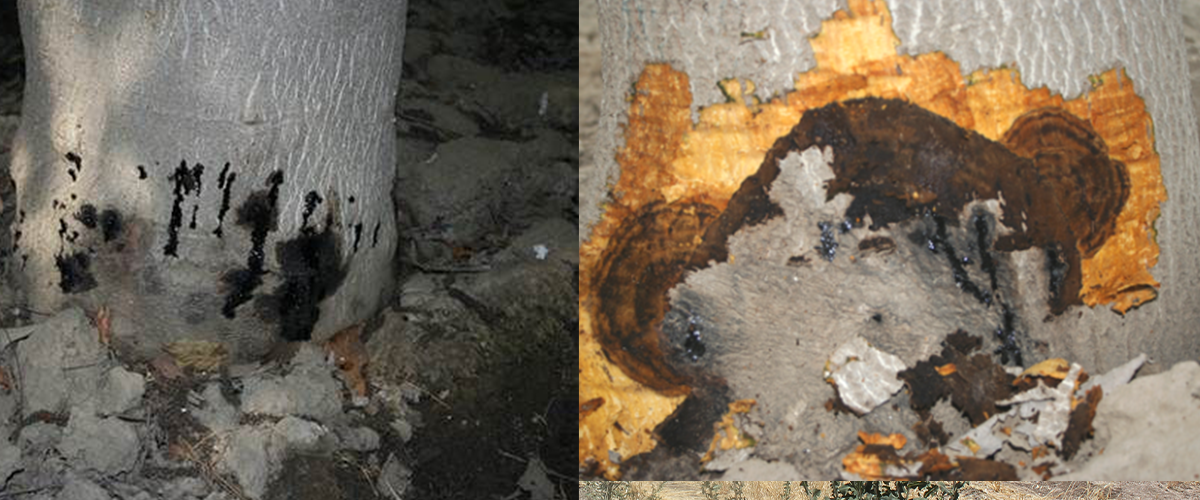
Researchers are continuing to investigate the pathogenic cause and effects of Paradox canker, a canker disease in walnut similar to Phytophthora.
Paradox canker is similar to Phytophthora in that both show bleeding bark around the root crown and tree trunk. Upon removal of the bark, Paradox canker shows rounded or lobed cankers on tree margins compared to the irregularly shaped cankers of Phytophthora.
Mohammad Nouri, UCCE Orchard Systems Advisor for San Joaquin County, has been working with UC Davis’ Greg Browne to determine the cause and characteristics of Paradox canker.
“To more precisely distinguish between both, you need to check the margin within the crown,” Nouri said.
According to the UC IPM website, the damaged margin and crown causes shoot growth to cease and tree defoliation and dieback to occur. The canker starts below ground at the root, and once the canker appears above ground, an affected tree will typically die within one to two years.
Nouri noted that trees experiencing levels of stress as a result of Paradox canker or Phytophthora will be more susceptible to other damage and/or disease as well.
“Any biotic or abiotic stressor will make the tree more susceptible to infection,” Nouri said. “When the tree is weak, it can be exposed to anything, whether that is sunburn, insects or other diseases. They will not take up enough water or nutrients to protect from exposure.”
Since Paradox canker currently does not have an identified pathogenic cause, treatment options are limited once the disease is present. Nouri said that researchers at UC Davis, including Browne and himself, are collecting diseased tissue samples that appear to be affected by Phytophthora or Paradox canker to isolate and determine a pathogenic cause and create a management plan. For now, Nouri advised, preventative measures are the best options for walnut growers.
“You can best prevent infection of the tree by preventing stress of the tree,” Nouri said. “I always tell my growers to use best management practices. So, when you do the best irrigation, you give the best nutrients to your trees and you do the best plantings from the beginning, you will create good, healthy trees that can resist any type of disorder.”
Currently, the disease has been seen throughout orchards in the Central Valley, but the UC IPM website states that incidence levels are less than 1%. Since there are no treatment options for Paradox canker, UCCE advises growers to remove dead trees without spreading any of the dead tissue in the orchard.
Researchers are currently working to understand Paradox canker in walnut and develop a management plan.











